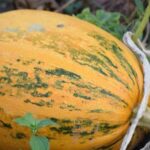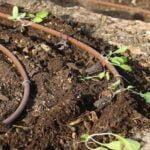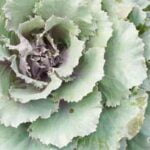Container gardening has become increasingly popular, particularly among urban dwellers and those with limited outdoor space. With the right knowledge and techniques, it is possible to grow an impressive variety of vegetables in containers. In this article, we will delve into the world of container gardening and discover the best vegetables to cultivate in these confined spaces.
One of the main reasons why container gardening is gaining popularity is its suitability for small spaces and urban environments. Whether you have a tiny balcony or a postage-stamp-sized backyard, container gardening allows you to grow your own vegetables without needing a traditional garden bed. This opens up endless possibilities for individuals living in apartments or urban areas where greenery may be scarce.
There are numerous benefits to growing vegetables in containers. For starters, containers offer flexibility. You can easily move them around to follow the sun’s path or adjust their positioning for decorative purposes. Containers also provide better control over soil quality and drainage compared to planting directly in the ground. Additionally, they minimize the risk of soil-borne diseases and allow for easier management of pests.
In this article, we will explore different types of containers suitable for vegetable gardening, essential factors for successful growth in containers such as sunlight requirements and soil selection, as well as tips for maintaining a thriving container vegetable garden. Moreover, we will highlight some easy-to-grow vegetables that thrive in containers such as cherry tomatoes, leafy greens, peppers, and herbs.
Get ready to embark on an exciting journey through the world of container gardening and discover how you can enjoy a bountiful harvest from your very own homegrown vegetables.
Selecting the Ideal Containers for Vegetable Gardening
Container gardening offers a convenient and efficient way to grow vegetables, especially for those who have limited space or live in urban areas. When it comes to choosing containers for your vegetable garden, there are a few key considerations to keep in mind.
Firstly, the type of container you choose can vary depending on your preferences and the available space. There are various options to consider, including pots, raised beds, hanging baskets, and grow bags. Each has its own advantages and drawbacks.
In terms of size, it’s crucial to select a container that is appropriate for the specific vegetable you intend to grow. Smaller plants with shallower roots such as lettuce or herbs will thrive in smaller containers, while larger plants like tomatoes or peppers will require larger containers to accommodate their root systems.
Effective drainage is another important factor when selecting containers. Without proper drainage, excess water can accumulate in the bottom of the container leading to root rot and other problems. Ensure that your chosen container has drainage holes at the bottom or consider adding a layer of gravel or broken pottery pieces to facilitate drainage.
Lastly, the material of the container can also impact plant growth. Clay or terracotta pots are popular choices as they allow air circulation through their porous walls. However, these materials tend to dry out more quickly compared to plastic or resin containers. Plastic containers are lightweight, retain moisture well and come in various sizes and shapes.
| Consideration | Tips |
|---|---|
| Size | Select an appropriately sized container based on the specific vegetable’s root size. |
| Drainage | Ensure that the container has drainage holes or add a layer of gravel/pottery shards. |
| Material | Choose a container material that suits the watering needs of the vegetable. |
The Key Factors for Successful Vegetable Gardening in Containers
Growing vegetables in containers has become increasingly popular, especially for those with limited outdoor space or living in urban areas. With the right knowledge and techniques, container gardening can be just as successful as traditional gardening methods. There are several key factors to consider when it comes to successfully growing vegetables in containers.
One important factor is sunlight requirements. Most vegetables require at least six hours of direct sunlight per day. When choosing a spot for your containers, make sure it receives adequate sunlight throughout the day. If you don’t have a sunny spot, consider using reflective materials to maximize the amount of light your plants receive.
Another crucial factor is soil selection. It’s important to choose well-draining soil that is also nutrient-rich. A good potting mix mixed with compost or organic matter can provide the perfect balance of drainage and nutrients for your vegetable plants. Avoid using regular garden soil, as it may be too heavy and compacted for container gardening.
In addition to sunlight and soil, proper watering techniques are essential for successful vegetable gardening in containers. Containers tend to dry out faster than traditional gardens, so it’s important to water them regularly. However, overwatering can cause root rot and other issues, so finding the right balance is key. Water your containers thoroughly until you see water draining from the bottom, and then allow the top inch or two of soil to dry out before watering again.
Lastly, fertilizing is important to provide essential nutrients for healthy vegetable growth. Container-grown vegetables often require more frequent fertilizing compared to those grown in the ground. Consider using a slow-release fertilizer or an organic liquid fertilizer specifically formulated for vegetables in containers.
By considering these key factors – sunlight requirements, soil selection, watering techniques, and fertilizing needs – you can ensure a thriving vegetable garden in containers. With proper care and attention, you’ll be able to enjoy fresh and nutritious homegrown vegetables, no matter the size of your outdoor space or location.
| Key Factor | Tips |
|---|---|
| Sunlight Requirements | Choose a spot with at least six hours of direct sunlight per day. Consider using reflective materials to maximize sunlight. |
| Soil Selection | Use well-draining potting mix mixed with compost or organic matter. Avoid using regular garden soil. |
| Watering Techniques | Water thoroughly until water drains from the bottom, then allow the top inch or two of soil to dry out before watering again. |
| Fertilizing Needs | Consider using slow-release fertilizer or organic liquid fertilizer formulated for container vegetables. |
Easy-to-Grow Vegetables for Container Gardening
Cherry tomatoes: compact varieties that thrive in containers
One of the most popular vegetables for container gardening is cherry tomatoes. These delicious little fruits come in compact varieties that are perfect for growing in containers. Cherry tomatoes are known for their high yield and ability to produce fruit continuously throughout the growing season. They also have a smaller root system, making them ideal for planting in smaller pots or hanging baskets.
When selecting cherry tomato plants for your container garden, look for determinate varieties that stay more compact and can be easily supported with stakes or cages. Some excellent choices include ‘Tiny Tim,’ ‘Patio Princess,’ and ‘Tumbling Tom.’ These varieties not only produce abundant harvests but also have a sweet and tangy flavor that will please any tomato lover.
Leafy greens: spinach, lettuce, and kale that can flourish in limited spaces
Leafy greens such as spinach, lettuce, and kale are another set of easy-to-grow vegetables that thrive in containers. These leafy vegetables have shallow roots, making them well-suited for container gardening. Moreover, they grow quickly, allowing you to enjoy a continuous supply of fresh greens throughout the growing season.
When selecting leafy greens for your container garden, opt for loose-leaf lettuce varieties such as ‘Black Seeded Simpson’ or ‘Red Sails.’ Baby spinach varieties like ‘Melody’ or ‘Baby’s Leaf Hybrid’ are also great options. As for kale, try compact varieties like ‘Dwarf Blue Curled’ or the strikingly colorful ‘Redbor.’ With regular watering and some protection from extreme heat or frost when necessary, these leafy greens will flourish in your container garden.
Peppers: miniature bell peppers or spicy chili peppers
If you’re looking to add some spice to your container garden, peppers are an excellent choice. Both miniature bell peppers and spicy chili peppers can be successfully grown in containers. These compact plants not only add color and beauty to your garden but also provide a bountiful harvest of flavorful peppers.
When selecting pepper plants for container gardening, choose smaller varieties that are more suitable for limited spaces. For miniature bell peppers, consider ‘Baby Belle’ or ‘Mini Red Bell.’ If you prefer some heat, try chili pepper varieties such as ‘Jalapeno,’ ‘Cayenne,’ or ‘Thai Dragon.’ These peppers will thrive in containers and add a kick to your culinary creations.
Herbs: basil, chives, and parsley for flavoring your dishes
No vegetable container garden is complete without a variety of herbs. Herbs like basil, chives, and parsley not only add delightful flavors to your dishes but also make excellent container plants. These aromatic herbs are easy to grow and require minimal care.
When it comes to herb selection for container gardening, there are countless options available. Sweet basil is a favorite among home gardeners and can be grown from seeds or transplants. Chives are another versatile herb that can be grown easily in containers. Consider planting common chives or garlic chives for their mild onion-like flavor. Lastly, parsley is a popular herb that adds freshness to many dishes. Go for curly-leafed or flat-leafed varieties to suit your taste preferences.
By incorporating these easy-to-grow vegetables into your container garden, you’ll have a thriving harvest in no time. From the sweetness of cherry tomatoes to the flavorsome kick of peppers and the fresh aroma of herbs, these vegetables will enhance both your gardening experience and your culinary adventures.
Root Vegetables for Container Gardening
Root vegetables can be successfully grown in containers, making them a great addition to a container garden. Despite their reputation for needing deep soil and ample space to grow, there are several root vegetables that are well-suited for container gardening. This section will explore some of the best root vegetables to grow in containers and provide tips for achieving successful growth.
When selecting root vegetables for container gardening, it’s important to choose varieties that have shorter growing seasons and compact sizes. Carrots are a popular choice for container gardening, but it’s best to opt for round or shorter varieties that will thrive in the limited space of a container. Radishes are another excellent option, as they have a rapid growth rate and are perfectly suited for containers due to their small size.
Another root vegetable that can thrive in containers is beets. Not only do they add color and vibrancy to your garden, but they also offer excellent nutritional value. Just make sure you choose deep containers that allow the beet roots to develop properly. Providing proper drainage and regular watering is essential when growing root vegetables in containers, as they need consistent moisture without becoming waterlogged.
To cultivate root vegetables in containers successfully, it’s crucial to use well-draining soil enriched with organic matter. A high-quality potting mix specifically formulated for vegetable gardening is recommended. Additionally, regular fertilization is necessary to ensure healthy plant growth. Applying a balanced fertilizer every few weeks or using slow-release fertilizers can provide the essential nutrients that root vegetables need.
By choosing the right varieties of root vegetables and providing them with suitable growing conditions, you can enjoy a bountiful harvest even with limited space. Root vegetables not only offer culinary versatility but also add visual interest to your container garden with their vibrant colors. Whether you’re an urban gardener or simply looking to maximize your small space, growing root vegetables in containers is an excellent way to bring fresh produce into your home.
Vertical Gardening with Vining Vegetables in Containers
Container gardening is not only limited to growing compact varieties of vegetables. With the right techniques and proper support, vining vegetables can also be successfully grown in containers, adding a vertical element to your garden. Vertical gardening not only saves space but also promotes better airflow and reduces the risk of pests and diseases. Here are some vining vegetables that thrive in containers:
- Cucumbers: Cucumbers are classic vining vegetables that can reach great heights if given proper support. Choose bush or compact varieties such as ‘Bush Champion’ or ‘Spacemaster’ that are specifically bred for container gardening. These cucumbers produce an abundance of crisp, delicious fruits perfect for fresh salads and pickling. To provide support, use trellises, stakes, or cages to guide their growth upwards.
- Beans: Climbing beans are a popular choice for vertical gardening due to their ability to grow upwards and save space. Varieties such as ‘Blue Lake’ or ‘Kentucky Wonder’ have long vines that easily adapt to containers with the right support systems like trellises or obelisks. These beans produce tender pods that can be enjoyed fresh or used in various recipes, providing a bountiful harvest without taking up much horizontal space.
- Peas: Peas are another wonderful option for vertical gardening in containers. Their delicate tendrils climb effortlessly when given the necessary supports like trellises or bamboo stakes. Look for dwarf pea varieties such as ‘Little Marvel’ or ‘Tom Thumb’ that stay compact while producing sweet and crisp peas. Enjoy them fresh off the vine or cook them into delightful dishes like stir-fries and soups.
By incorporating these vining vegetables into your container garden, you can make the most efficient use of your space while enjoying an abundant harvest.
Tips for Vertical Gardening
- Provide adequate support: Invest in trellises, stakes, or cages that are stable and tall enough to accommodate the growth of your vining vegetables. Make sure they are securely anchored to prevent toppling over.
- Regular pruning: Trim away any excessive growth, especially lateral branches and side shoots, to focus the plant’s energy on developing strong vertical stems. This will promote better airflow and prevent overcrowding.
- Watering considerations: Vining vegetables may have higher water requirements due to their rapid growth. Monitor soil moisture levels regularly and provide supplemental watering as needed. It is important to strike a balance between keeping the soil consistently moist without overwatering.
- Fertilizing needs: Vining vegetables benefit from regular feeding to ensure nutrient availability for their vigorous growth. Use a balanced organic fertilizer or add compost to the potting mix at the start of the growing season.
With these tips in mind, you can successfully incorporate vining vegetables into your container garden, creating an impressive vertical display while maximizing your growing space. The rewards of watching these plants climb and produce an abundant harvest will be well worth it.
Tips for Maintaining a Thriving Container Vegetable Garden
Maintaining a thriving container vegetable garden requires attention and care. Here are some tips to help you keep your plants healthy and productive:
- Regular monitoring and adjusting of watering needs: Container gardens tend to dry out more quickly than traditional gardens, so it’s important to regularly check the moisture levels in the soil. Stick your finger about an inch into the soil; if it feels dry, then it’s time to water.
On the other hand, if the soil feels too damp or soggy, you may be overwatering, which can lead to root rot. Adjust your watering schedule accordingly to ensure that your plants receive just the right amount of water. - Pruning and harvesting techniques: Regularly prune your plants by pinching off dead leaves or branches. This helps promote new growth and allows for better airflow around your plants, reducing the risk of disease. Additionally, be sure to harvest your vegetables at their peak ripeness to encourage continuous production. Harvesting also prevents overcrowding and allows for better nutrient distribution among your plants.
- Pest control strategies in a confined gardening space: Containers can provide a haven for pests such as aphids and snails. Implement preventative measures such as regularly inspecting your plants for signs of pests and promptly removing any infested leaves or insects. You can also use natural pest control methods like introducing beneficial insects or making homemade sprays using ingredients like neem oil or garlic.
- Seasonal adjustments and succession planting in containers: As seasons change, it’s important to adjust your container garden accordingly. Certain vegetables thrive in specific temperatures; therefore, consider rotating crops based on their seasonality for optimal growth. Succession planting is also key to ensuring a continuous harvest throughout the growing season. When one crop finishes producing, replant with another vegetable that thrives in the current season.
By following these tips, you can maintain a thriving container vegetable garden throughout the year. Remember to stay vigilant and adapt your maintenance routines based on the specific needs of your plants. Happy gardening.
Creative and Space-Saving Container Gardening Ideas
Container gardening offers endless possibilities for creativity and space-saving solutions. By thinking outside the box and utilizing unconventional containers and techniques, you can maximize your growing space and create a visually stunning garden.
Using tiered planters and vertical frames
One creative way to make the most of your limited space is by using tiered planters or vertical frames. Tiered planters allow you to stack multiple containers vertically, providing more planting area without taking up additional floor space. This is especially beneficial for growing herbs, strawberries, or trailing plants like vining tomatoes.
Vertical frames are another excellent option for maximizing space in container gardening. You can attach trellises or stakes to your containers and train climbing vegetables like cucumbers, beans, or peas to grow upwards. This not only saves space but also adds a beautiful vertical element to your garden.
Repurposing unconventional containers
When it comes to container gardening, there is no need to limit yourself to traditional pots and planters. Look around your home for unused items that can be repurposed into unique containers. Old buckets, laundry baskets, wooden crates, or small barrels can all serve as excellent vessels for your plants.
To ensure adequate drainage in these unconventional containers, drill holes in the bottom or sides if necessary. Additionally, consider painting or decorating them to enhance their aesthetic appeal and blend seamlessly with your outdoor decor.
Companion planting in containers
Another creative idea for container gardening is companion planting. Companion planting involves pairing compatible plants together based on their mutual benefits or pest-repellent properties. In a confined space like a container garden, companion planting helps optimize growing conditions and increase productivity.
For example, plant fragrant herbs such as basil or chives alongside vegetables like tomatoes to deter pests naturally. Marigolds can be interplanted with root vegetables like carrots or beets as they repel harmful insects. Experiment with different combinations and enjoy the benefits of companion planting in your container garden.
By implementing these creative and space-saving container gardening ideas, you can transform even the tiniest space into a thriving and visually appealing vegetable garden. Remember to prioritize proper drainage, sunlight exposure, and nutrient-rich soil for optimal growth. With some innovation and a little bit of planning, you can harvest fresh homegrown vegetables right outside your door.
Conclusion
In conclusion, container gardening offers a world of possibilities for those with limited space or urban dwellers looking to cultivate their own vegetables. Throughout this article, we have explored the benefits of growing vegetables in containers and provided tips and recommendations for successful container gardening.
By selecting the ideal containers, considering factors such as size, drainage, and material, and ensuring proper watering techniques and nutrient-rich soil, you can create an optimal environment for your vegetable garden. We have also highlighted a variety of easy-to-grow vegetables suitable for container gardening, including cherry tomatoes, leafy greens, peppers, and herbs.
Root vegetables such as carrots, radishes, and beets can also thrive in containers if you choose the right varieties. Additionally, vertical gardening with vining vegetables like cucumbers, beans, and peas allows you to maximize space while still enjoying a bountiful harvest.
To maintain a thriving container vegetable garden, regular monitoring of watering needs and pruning techniques are essential. Implementing pest control strategies and making seasonal adjustments or succession planting can further enhance the productivity of your garden.
Finally, we encourage readers to embrace the joy of container gardening by starting their own vegetable container garden. The satisfaction and rewards of growing and enjoying homegrown vegetables are unparalleled. So why not make the most of your small space or urban setting by exploring the possibilities that container gardening offers? With a little bit of planning and care, you can experience the joy of harvesting your very own bountiful supply of deliciously fresh vegetables right at home.
Frequently Asked Questions
What are the top 10 vegetables grown in containers?
The top 10 vegetables grown in containers include tomatoes, peppers, lettuce, spinach, cucumbers, beans, radishes, carrots, herbs (such as basil or parsley), and onions. These vegetables are well-suited for container gardening due to their compact growth habits and ability to thrive in confined spaces.
Tomatoes and peppers are particularly popular choices as they can be grown successfully in pots of various sizes and produce a bountiful harvest when provided with adequate care, sunlight, and support.
What are the best root vegetables to grow in containers?
Root vegetables that are best suited for container gardening include carrots, radishes, turnips, beets, and potatoes. Carrots are an excellent option as they have narrow roots that grow straight down and do not require much space horizontally. Radishes also thrive in containers since they have shallow roots and mature relatively quickly.
Turnips and beets can be grown successfully in deep containers that allow their tuberous roots to develop properly. As for potatoes, certain varieties like fingerling potatoes or new potatoes can be grown in large pots or containers by layering soil as the plants grow taller.
What vegetables can you grow in buckets?
There are several vegetables that you can grow in buckets with great success. Some of these include tomatoes, peppers, eggplants, zucchini or other summer squashes, bush beans, kale or Swiss chard (leafy greens), and even small varieties of cucumbers or melons. Buckets offer sufficient depth for these vegetables’ root systems to establish themselves and produce a decent harvest.
Proper drainage is essential when using buckets for container gardening; therefore drilling holes at the bottom of the buckets should be done to allow excess water to escape while preventing waterlogged soil conditions. Additionally, providing trellises or stakes for vining plants like tomatoes or cucumbers will help support their growth upwards rather than sprawling across the bucket’s surface.

If you’re looking to get into vegetable gardening, or are just looking for some tips on how to make your current garden better, then you’ve come to the right place! My name is Ethel and I have been gardening for years. In this blog, I’m going to share with you some of my best tips on how to create a successful vegetable garden.





